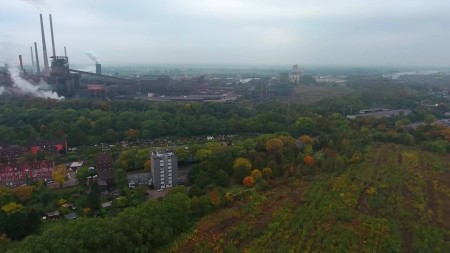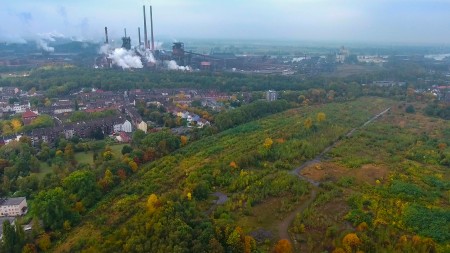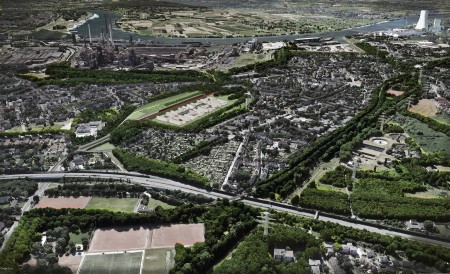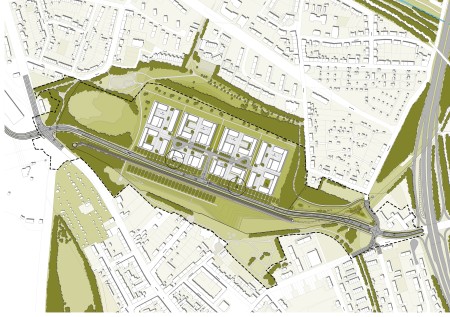Daily press, Trade press, 2016-10-26, 12:30 pm
Major development project in northern Duisburg: City and thyssenkrupp planning to convert “Shaft 2/5” on former coal mine site into “Friedrich Park” green quarter
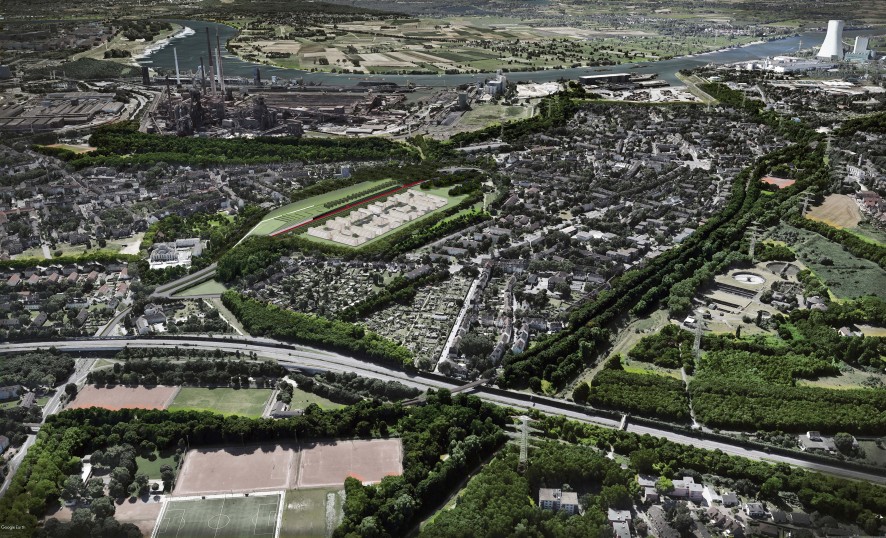
New prospects for the north of Duisburg: The Steel division of thyssenkrupp and the city of Duisburg are planning to jointly develop part of the former Friedrich Thyssen coal mine and convert the land around “Shaft 2/5” into a new “Friedrich Park”. This major urban development project will create a roughly 25 hectare green area between the districts of Marxloh and Fahrn with good links to existing public green areas, as well as a business park. Part of this project will include the construction of a “South-West Hamborn/Walsum bypass” leading from the A59 highway. Following public participation and approval of the urban land-use plan, a start could be made on redeveloping the unused land in 2018.
“We will now finally have the opportunity to complete the first section of the South-West Hamborn/Walsum bypass, develop further business areas and provide recreation areas for people in the north of Duisburg,” says Duisburg’s mayor Sören Link. “Together with our partner thyssenkrupp we can complete this project over the next few years.” Thomas Schlenz, CHRO of thyssenkrupp Steel Europe AG, sees this structural change as a huge opportunity for the surrounding districts. “The park will significantly and sustainably upgrade the area. This is further evidence that we want to be a good neighbor, meet our social obligations to the people of Duisburg and be a dependable partner to the city.”
Coal was last raised from Friedrich Thyssen shaft 2/5 in 1976. After 80 years in operation the mine was closed, bringing an end to the tradition of coal mining in Hamborn. The land belongs to thyssenkrupp and will be transferred to the city of Duisburg as part of the development. The planning concept for the land, which is roughly the size of 35 soccer pitches, includes several components:
- At the heart of the plans is a 10 hectare green area to be used as a public recreation area for people in the north of Duisburg. In line with its corporate social responsibility and its role as “good neighbor”, thyssenkrupp Steel will be responsible for greening this area. Details of the park and playing areas will be agreed in the planning process, which will be carried out with the involvement of local residents.
- A business park will be created in the central part of the site which aims to attract commercial enterprises with the help of Duisburg’s business development association “Duisburger Gesellschaft für Wirtschaftsförderung”. The future utilization concept will be based on requirements in the north of Duisburg.
- To ease the traffic situation for residents in the districts of Marxloh and Fahrn, plans also include the construction of a “South-West Hamborn/Walsum bypass”. From the A59 highway this bypass will cut across the planned area and then continue around the northern boundary of the thyssenkrupp plant site in Walsum. This road will significantly reduce inner-city traffic levels. It will also provide a link to the planned port development “Logport VI” on the grounds of the disused paper factory in Duisburg-Walsum.
- In parallel with the bypass, a new section of the Rhine-Ruhr district heating system is to be built which will supply many households in Duisburg in the future.
The citizens of Duisburg will be fully involved in the plans for the “Friedrich Park” (named after the “Friedrich Thyssen coal mine”) from an early stage. A first information event is planned and will be held directly on the site. Furthermore, a community engagement phase of the public development planning procedure will be implemented. Work on redevelopment of the site is to start as quickly as possible, but it will be some time before residents are able to enjoy the benefits of the park and the bypass. Upon completion, this green quarter for recreation and business will be a further pioneering example of structural change in the Ruhr region.
Friedrich Thyssen mine supplied coal to steel mill
The “Friedrich Thyssen coal mine”, named after the father of the industrialist August Thyssen, was formed from the coalmining company Gewerkschaft Deutscher Kaiser. In September 1891 August Thyssen announced that he had acquired all shares in this company. This marked the start of steel production in the city of Duisburg. Three months later, the first steel was melted in the presence of the company’s founder. This year thyssenkrupp Steel is celebrating “Steel from Duisburg” to mark the 125th anniversary of this event. By combining coal mining and steel production, August Thyssen laid the foundations for the success of his company.
For a time, the “Friedrich Thyssen coal mine” was the biggest in the Ruhr. Shaft 2/5 was in operation from January 2, 1896 to December 15, 1976, during which time over 91 million tons of coal was mined. This high-quality “black gold” from below the ground in Hamborn was mainly processed into coke, which was used in Thyssen’s blast furnaces to produce pig iron.
